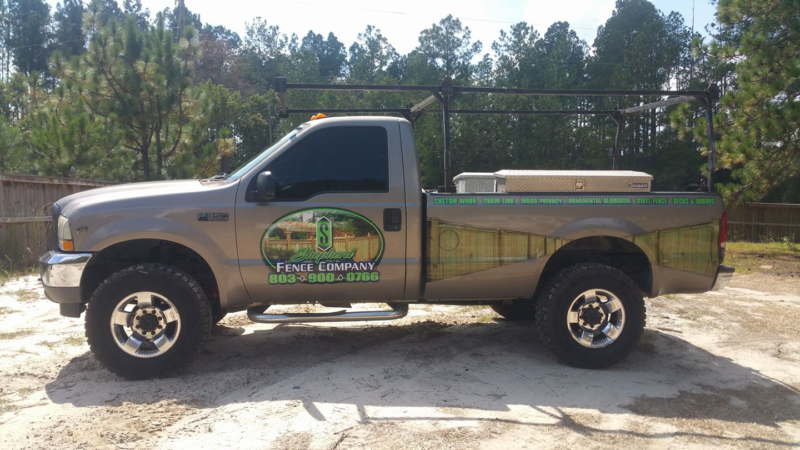A Complete Guide to RNA DNA Extraction: Methods & Best Practices


In molecular biology, the extraction of RNA and DNA plays a crucial role in various research applications, including genetic analysis, gene expression studies, and diagnostics. Whether you’re a beginner or an experienced researcher, understanding the methods and best practices involved in RNA and DNA extraction is vital for obtaining high-quality, reliable results.
In this comprehensive guide, we will explore the various methods for RNA and DNA extraction, their applications, and the best practices to ensure high-quality samples. By the end of this guide, you will have a solid understanding of the processes involved in RNA and DNA extraction, as well as key considerations to improve your results.
Understanding RNA and DNA Extraction
Before diving into the methods, it’s essential to understand the core differences between RNA and DNA. Both RNA and DNA are nucleic acids, but they serve different functions in the cell.
DNA (Deoxyribonucleic Acid):
- DNA carries the genetic blueprint of an organism and is composed of two strands that form a double helix.
- DNA is stable under a variety of conditions, which makes it easier to extract.
RNA (Ribonucleic Acid):
- RNA is involved in the synthesis of proteins and exists as a single strand.
- RNA is more prone to degradation than DNA, making its extraction more sensitive and challenging.
Both RNA and DNA extraction require specialized techniques to ensure the integrity of the samples for downstream analysis, such as PCR (Polymerase Chain Reaction), sequencing, or gene expression studies.
RNA and DNA Extraction Methods
There are several methods available for RNA and DNA extraction, each suited to specific applications. Let’s examine some of the most commonly used techniques for both RNA and DNA extraction.
Manual Extraction Methods
Manual methods are traditional techniques that offer flexibility and can be adapted to different sample types. Here are the key steps in manual RNA and DNA extraction.
For DNA Extraction:
- Cell Lysis: The first step is to break open the cell to release DNA. This can be achieved through mechanical disruption, chemical lysis buffers, or enzymatic methods.
- DNA Precipitation: After cell lysis, the DNA is precipitated using alcohol (ethanol or isopropanol) and can then be collected by centrifugation.
- Purification: The DNA is washed to remove impurities, such as proteins and salts, using ethanol or other solvents.
For RNA Extraction:
- Cell Lysis: Similar to DNA extraction, cell lysis is essential to release RNA. However, RNA is much more sensitive to degradation, so this step requires careful handling.
- Inhibition of RNase Activity: RNases are enzymes that degrade RNA, so an RNase inhibitor is added during RNA extraction to protect the integrity of the RNA.
- RNA Precipitation: Once the cell has been lysed, RNA is precipitated and purified using alcohol.
Manual extraction methods are often used in smaller laboratories and for research purposes. However, these methods require skill and careful handling to avoid contamination or degradation of RNA.
Commercial RNA and DNA Extraction Kits
For more streamlined and consistent extraction, commercial kits are widely used in both research and clinical settings. These kits simplify the extraction process by providing all the necessary reagents and protocols.
- Silica Membrane-Based Kits: These kits use a silica membrane to selectively bind nucleic acids. The sample is lysed and then passed through a column, where the RNA or DNA binds to the membrane. After washing, the purified RNA or DNA is eluted.
- Magnetic Bead-Based Kits: These kits utilize magnetic beads coated with a nucleic acid-binding substance. The beads are mixed with the lysed sample, and magnetic separation allows the RNA or DNA to be purified without the need for centrifugation.
While these kits are more expensive than manual methods, they provide greater consistency, reliability, and convenience, especially when dealing with large volumes of samples or high-throughput requirements.
Automated RNA and DNA Extraction
For large-scale studies, automation has become a key tool in RNA and DNA extraction. Automated systems allow for high-throughput extraction, ensuring that results are reproducible and consistent. These systems are often used in clinical diagnostics, genomic studies, and research laboratories that handle a large number of samples.
Automated systems combine the steps of cell lysis, nucleic acid binding, washing, and elution into a single, integrated platform, significantly reducing hands-on time and minimizing human error.
Best Practices for RNA and DNA Extraction
Regardless of the method you choose, there are several best practices that can help ensure successful RNA and DNA extraction.
Sample Quality Matters
Starting with high-quality biological samples is essential for obtaining pure and intact RNA and DNA. Ensure that your samples are collected, stored, and processed under appropriate conditions to minimize degradation.
Use of RNase-Free Reagents and Equipment
RNA is highly susceptible to degradation by RNases, which are ubiquitous enzymes that break down RNA. To protect RNA integrity, always use RNase-free reagents, equipment, and consumables, such as tubes and pipette tips.
Careful Handling of Samples
During RNA extraction, it is critical to work in a clean, controlled environment to avoid contamination. Use gloves, and avoid talking near RNA samples, as RNase can be transferred through saliva. If possible, work in an RNase-free hood.
Temperature Control
RNA is more unstable than DNA and degrades more easily. Work quickly, and always keep samples on ice when handling RNA. For DNA extraction, although it is more stable, temperature control is still important during the purification steps.
Optimizing Lysis Conditions
Different sample types may require different lysis conditions. For example, plant tissues require more rigorous lysis due to the presence of tough cell walls, whereas animal cells are easier to lyse. Always optimize the lysis buffer to suit the specific sample type.
Minimize Contamination
Contamination of samples with proteins, lipids, or other cellular components can affect the quality of RNA and DNA. Ensure proper washing and purification steps to remove contaminants that may interfere with downstream applications.

Verify RNA and DNA Integrity
After extraction, it is crucial to assess the quality and quantity of RNA and DNA. Spectrophotometry (e.g., using a NanoDrop) can be used to measure the concentration and purity of your samples, while gel electrophoresis or a Bioanalyzer can help evaluate the integrity of RNA and DNA.
Applications of RNA and DNA Extraction
The extraction of RNA and DNA has far-reaching applications across various fields of research and clinical practice. Some of the key applications include:
- Genetic Research: RNA and DNA extraction is fundamental for gene expression studies, sequencing, and genetic mapping.
- Diagnostics: Clinical labs use RNA and DNA extraction to detect pathogens, identify genetic disorders, and conduct prenatal genetic testing.
- Forensics: In forensic science, DNA extraction is used to analyze crime scene samples, paternity testing, and human identification.
- Agricultural Research: RNA and DNA extraction is widely used in plant breeding, disease resistance studies, and genetically modified organism (GMO) testing.
Challenges in RNA and DNA Extraction
While RNA and DNA extraction is a standard process, there are several challenges that researchers may face, including:
- RNA Degradation: RNA is particularly fragile, and contamination with RNases can lead to degradation, making accurate analysis difficult.
- Low Yield: Sometimes, the extraction process may not yield sufficient amounts of RNA or DNA for downstream applications.
- Contamination: Even small amounts of contaminants can interfere with subsequent analyses, leading to unreliable results.
Conclusion
RNA and DNA extraction are fundamental techniques in molecular biology and biotechnology, essential for research, diagnostics, and various scientific advancements. Whether you are working with RNA or DNA, understanding the different methods, best practices, and applications will help ensure high-quality, reproducible results.
By following the tips and protocols outlined in this guide, you can improve the reliability of your RNA and DNA extraction processes. As you continue to explore the world of molecular biology, partnering with experts who provide cutting-edge tools and techniques can be crucial to your success.
For those looking to enhance their RNA and DNA extraction processes and improve their research outcomes, it’s essential to rely on trusted industry leaders. Migene stands at the forefront of providing top-tier services and solutions for laboratory needs. Whether you are conducting genetic research, diagnostics, or any other application, Migene offers advanced technologies and expert support to ensure optimal results every time.


